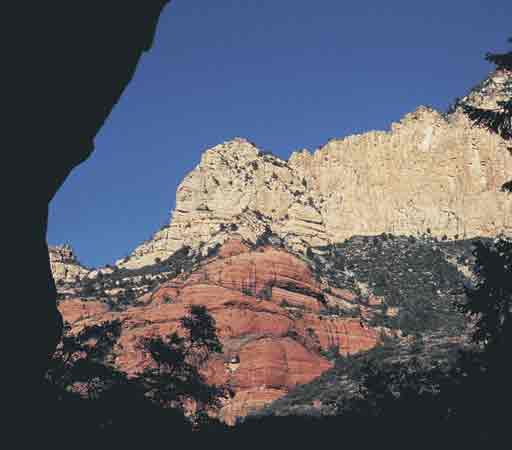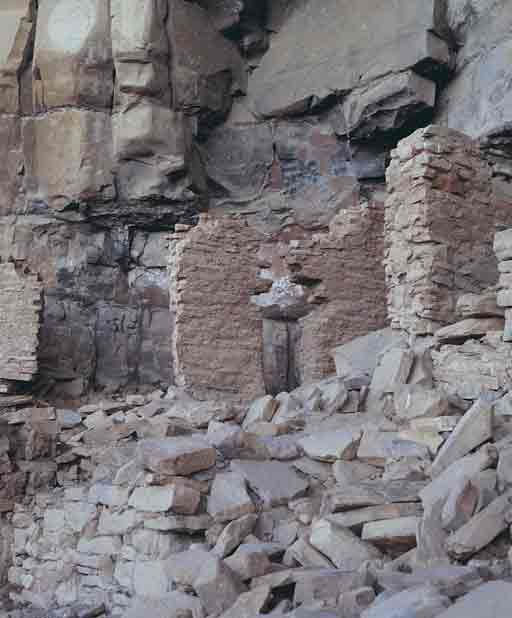|
|
|
| Subscriptions click here for 20% off! | E-Mail: info@rangemagazine.com |
Attitude Adjustment
|
|||||||||||
|
|||||||||||
By Cathy Osborn Edger |
|||||||||||
|
Back in my 1970s college days I was well on my way to becoming an environmental wacko. I was a recreation major, parks and resources emphasis. I fretted over the impending air-pollution-induced ice age my textbooks warned about. I was disgusted with the volume of paper napkins that I saw go into the trash each day at the dorm cafeteria. I knew I had to apply what I was learning in my own life or be a hypocrite. So I stopped running the furnace with the window open, using paper towels and napkins, and turned off all the lights I wasn’t using. Furthermore, if some little people got hurt in the name of environmental preservation, it was okay by me. During Easter break in my sophomore year my family made our first visit to a distant cousin’s ranch in Arizona. I’ll call them Zack and Liz (because Liz is adamant about not allowing any publicity about her while she is still alive). These cousins lived, and then retired, on their ranch about 50 miles south of Flagstaff since 1933. The ranch was 10 miles off the highway and surrounded by the Coconino National Forest. The red rock beauty surrounding the ranch, and my cousins’ hospitality, enchanted us. We visited tourist attractions in the area but the highlight of the visit was being at the ranch in Zack and Liz’s company. There they showed us sights at the ranch and in the National Forest. We saw Indian ruins, pictographs, and the dammed water tank, not much bigger than a swimming pool, at the base of a red sandstone cliff. From this tank, they’d gotten their water for over two decades before electricity made a well and a pump possible. Liz guided us through her cactus garden; a quarter mile graveled trail along which she had planted hedgehog, pincushion, and cholla cactus. She’d made various ornaments to decorate the garden. Where the trail crossed a stretch of undulating slickrock she floated some ships made out of abalone shells with scallop shells for sails. As we started across the “water” Zack cautioned gleefully, “Watch out! You’ll get your feet wet.” Along the garden path Liz had placed a series of plaques with quotes such as, “Always be kind, everyone is fighting a hard battle,” that reflected her worldview. Another offered pithy advice, “It is more important to watch how a man lives than to listen to what he says.” I got my first job after graduation at Grand Canyon National Park and spent three seasons working at the park’s entrance stations and campgrounds. I visited Zack and Liz every chance I got, spending upwards of two weeks with them on some visits. Always gracious, they kept inviting me back. I kept on accepting and showing up with a pot roast and half a gallon of chocolate ice cream. People from all over the country visited the ranch. “I’ve made more friends living out here than if I lived in town,” Liz said. One November I made pine cone wreaths in her hobby room while she got to work addressing 250 Christmas cards. Most of them went to people she’d first met in her own front yard. I learned a little about what life had been like for them when they’d first moved out. With a loan from his brother and the local bank, Zack bought the ranch at auction after the homesteader died leaving no heirs. The first time Liz saw the place was the day she moved in. There was no telephone, no electricity, and not much company. No one, including Zack and Liz, drove anywhere unless they had to. They had a loan to pay off during the Depression when banks frequently foreclosed on unfortunate borrowers. When the summer storms arrived they’d drain the water tank, Liz would sweep it clean, and they’d wait for the next storm to begin filling it up. During my visits I was happy to adapt myself to their frugal ways. I found a place to store my paper napkin between meals, as I observed them do. I could use and reuse it for several days before getting a fresh one. I saved dishwater to “give the little plants a drink” alongside the house and tried to remember to flush the toilet only when it was absolutely necessary. In a week’s stay I’d take one shower. One spring I arrived at the ranch before the season started to learn that it was inside the proposed boundaries of a new National Monument. Liz was sick with worry. When he talked about it, the twinkle in Zack’s eye was missing. The agency that I worked for—the National Park Service (NPS) and always thought of as the good guys—had agreed with some local boosters and a Congressman that the area was ripe for National Monument status. Liz told me what she understood about the situation, based on what NPS told her. Once they had the ranch inside monument boundaries she and Zack could stay, but they’d have to get permission to make any changes around the ranch. Adding a bathroom or tearing down a barn would not be easy. If they left after a few years NPS would deduct a kind of rent from their payment for each year they’d remained at the ranch. It appeared that what the NPS planners really wanted was for Liz and Zack to leave. “It’s too bad you have to live in such a pretty place,” one of them told her after saying that the ranch buildings would complement a visitor center. Another proponent spoke at a public meeting about the monument, stating that the ranch had “No Trespassing” signs all over the place. He didn’t know that Liz was at that crowded meeting. “You should’a seen her,” one of her neighbors told me. “All 5 feet 2 inches of her stood up and set that guy straight. She told him that he knew that wasn’t true, that she’d welcomed him to the ranch like she did everyone else. What’s more she and Zack showed him the museum they’d built with their own money in which they showed people all their old-time things, where to find the ruins and pictographs, and even told him how to get up on the butte without breaking his neck. The crowd clapped and roared. That guy sat down and shut up.” I flipped through one of my Audubon magazines checking out the ads. There were full-page color ads for DeBeers diamond necklaces, Mercedes and Peugeot sedans, and travel ads for trips to Antarctica, Australia, and India where readers could enjoy “white tigers and creature comforts.” Audubon advertised its own International Ecology Workshops in far-flung Tonga, East Africa, and Guatemala. I realized that if the readers of Audubon could afford “creature comforts” in India, then they were also the consumers who had the means to buy luxuries at home such as hot tubs and automatic dishwashers. In fact, I noticed most ads were directed at people with considerable discretionary incomes, and influence. Those ads wouldn’t be there if they weren’t increasing their advertisers’ revenue. I further noted that they weren’t directed at people like Zack and Liz who had spent a lifetime drying their laundry on a clothesline, using one light bulb at a time, or only taking three domestic car trips in the last 50 years. Just who, I asked myself, is demanding more from the earth? Is it the birdwatcher who totes his $500 Bushnells on a gas-guzzling jet to Fiji for an ecology workshop, or Zack and Liz who dry-farm grapes, apples and peaches in their retirement years and drive 20 miles to town once a week? When I examined how Zack and Liz lived versus how the rich environmentalists lived I concluded that it was indeed “more important to watch how a man lives than to listen to what he says.” I saw in the detail of their lives a record of good stewardship, and in the environmental intelligentsia a glaring hypocrisy that I couldn’t ignore. Though I continue to care about good environmental stewardship, I realized then that my earlier attitude toward the “little people” needed to change. It is flat out wrong to victimize them in the name of environmental protection, especially when they are doing no harm and there are other alternatives. In the end another, more reasonable alternative was realized. After Ronald Reagan was elected in 1980 the Monument legislation was dropped and a portion of the National Forest bordering the ranch was established as a wilderness area. Zack and Liz kept the ranch. Zack died in the late 1980s and Liz still loves her home more than any place on earth. Cathy Edger lives in Novato, Calif. One of her favorite quotes is by Mark Twain who said, “I never let schooling interfere with my education.” |
|||||||||||
|
|||||||||||
|
To Subscribe: Please click here or call 1-800-RANGE-4-U for a special web price Copyright © 1998-2005 RANGE magazine For problems or questions regarding this site, please contact Dolphin Enterprises. last page update: 04.03.05 |
|||



